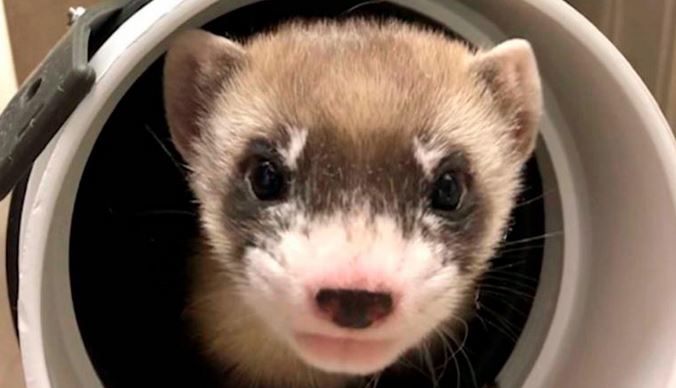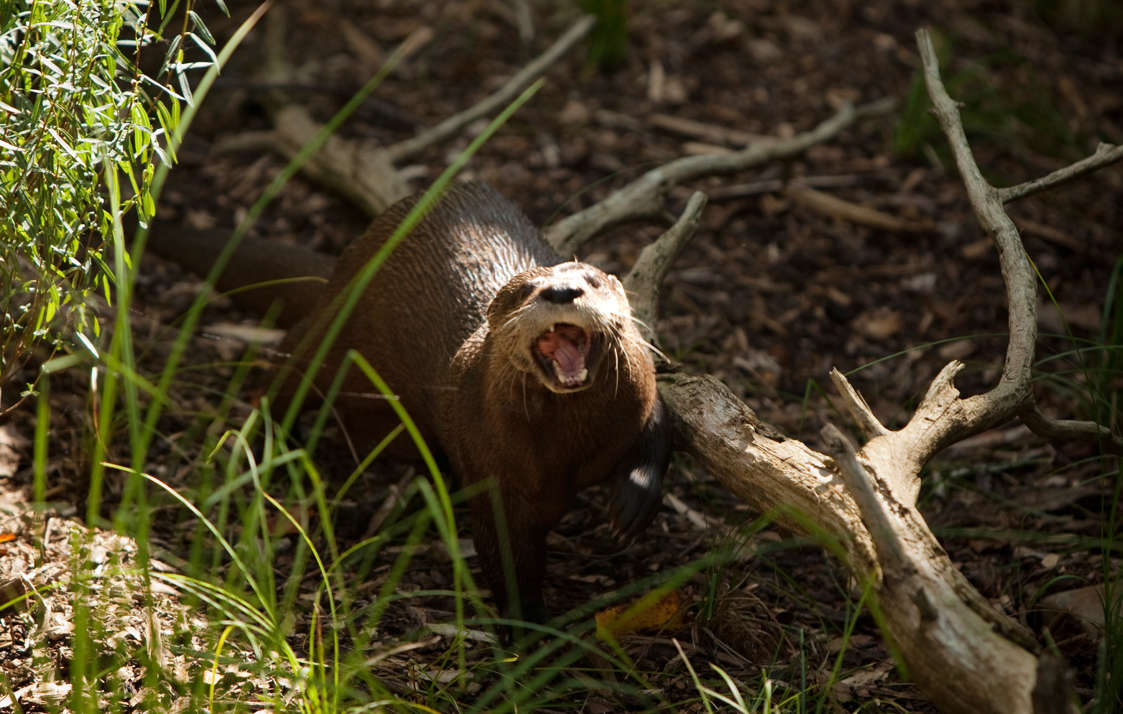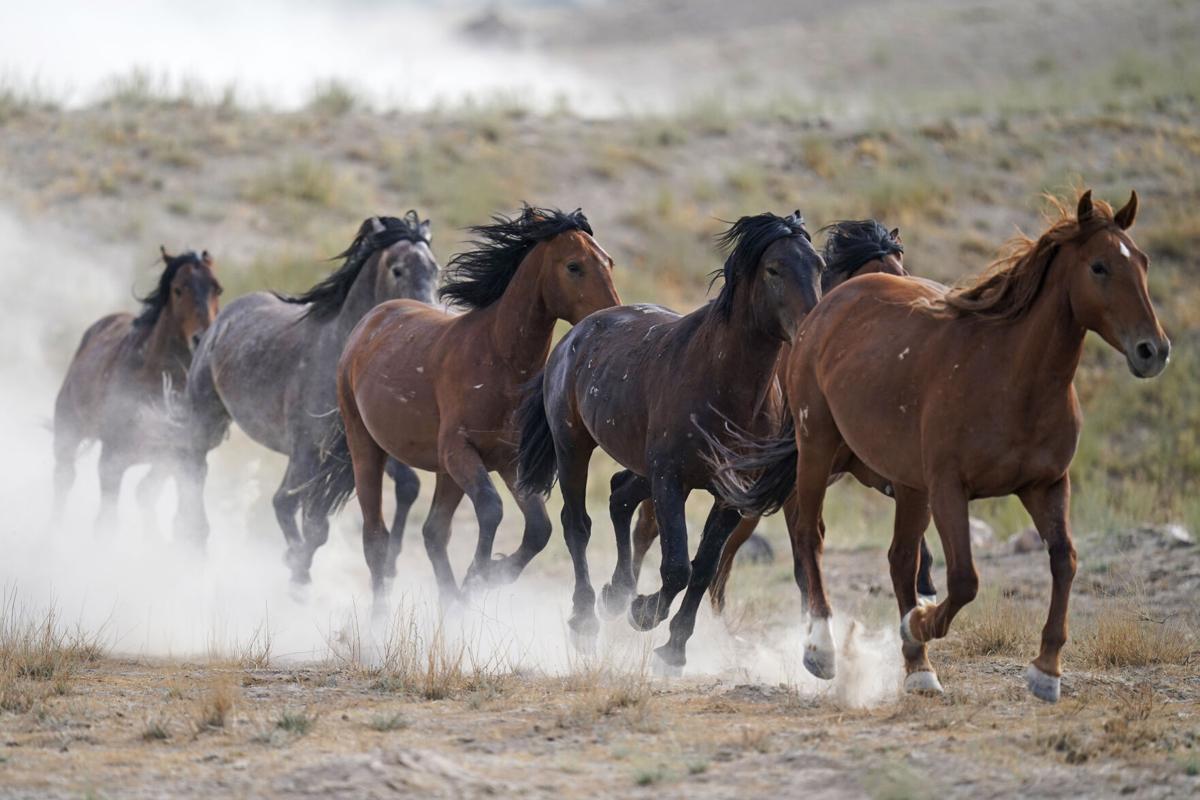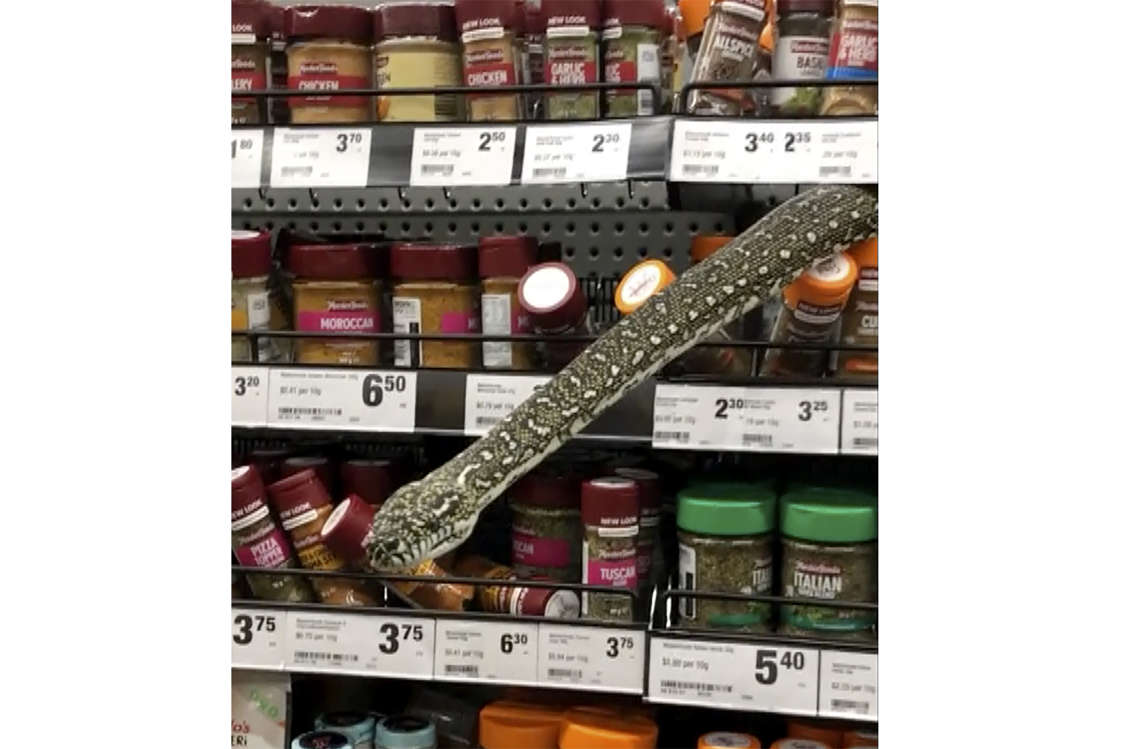Scientists Bring Animal Back to Life that Died 30 Years Ago
Scientists have cloned the first U.S. endangered species, a black-footed ferret, using the genes of an animal that died over 30 years ago.
Elizabeth Ann was born on December 10 and announced last week. She may look cute and innocent, but unlike the domestic ferret foster mom she was cloned from, Elizabeth Ann is a wild animal at heart.
“You might have been handling a black-footed ferret kit and then they try to take your finger off the next day,” U.S. Fish and Wildlife Service black-footed ferret recovery coordinator Pete Gober said. “She’s holding her own.”
Elizabeth Ann is being raised at a Fish and Wildlife Service black-footed ferret breeding facility in Fort Collins, Colorado. She is a genetic copy of a ferret named Willa who died in 1988, whose remains were frozen in the early days of DNA technology.
Eventually, cloning could bring back extinct species. But for now, the technique can be used to help endangered species.
“Biotechnology and genomic data can really make a difference on the ground with conservation efforts,” said Ben Novak, lead scientist with Revive & Restore, a biotechnology-focused conservation nonprofit that coordinated the ferret cloning.
Black-footed ferrets are a type of weasel. They are easily recognized by dark eye markings resembling a robber’s mask.
Even before the cloning, black-footed ferrets have experienced a scientific miracle. As ranchers shot and poisoned prairie dog colonies, the ferret’s main food source, they suffered habitat loss and were thought to be extinct. But then, in 1981, a ranch dog named Shep brought a dead one home in Wyoming.
Scientists then gathered the remaining population for a captive breeding program. The program has released thousands of ferrets at dozens of sites in the western U.S., Canada, and Mexico since the 1990s.
However, a lack of genetic diversity still poses a great risk to the ferret population. All ferrets reintroduced so far are the descendants of just seven closely related animals. This makes the creature highly susceptible to intestinal parasites and diseases such as sylvatic plague.
When Willa died, the Wyoming Game and Fish Department sent her tissues to a “frozen zoo” run by San Diego Zoo Global that maintains cells from more than 1,100 species and subspecies worldwide. Eventually, scientists may be able to modify those genes to help cloned animals survive.
“With these cloning techniques, you can basically freeze time and regenerate those cells,” Gober said. “We’re far from it now as far as tinkering with the genome to confer any genetic resistance, but that’s a possibility in the future.”
Cloning makes a new plant or animal by copying the genes of an existing animal. Texas-based Viagen, a company that clones pet cats for $35,000 and dogs for $50,000, cloned a Przewalski’s horse, a wild horse species from Mongolia born last summer.
Similar to the black-footed ferret, the 2,000 or so surviving Przewalski’s horses are descendants of just a dozen animals.
Viagen also cloned Willa through coordination by Revive & Restore, a wildlife conservation organization focused on biotechnology. Besides cloning, the nonprofit in Sausalito, California, promotes genetic research into imperiled life forms ranging from sea stars to jaguars.
“How can we actually apply some of those advances in science for conservation? Because conservation needs more tools in the toolbox. That’s our whole motivation. Cloning is just one of the tools,” said Revive & Restore co-founder and executive director Ryan Phelan.
Elizabeth Ann was born to a tame domestic ferret, which avoided putting a rare black-footed ferret at risk. Two unrelated domestic ferrets also were born by cesarian section. A second clone didn’t survive.
Elizabeth Ann and future clones of Willa will form a new line of black-footed ferrets that will remain in Fort Collins for study. There currently are no plans to release them into the wild, said Gober.
Novak, the lead scientist at Revive & Restore, calls himself the group’s “passenger pigeon guy” for his work to someday bring back the once common bird that has been extinct for over a century. Cloning birds is considered far more challenging than mammals because of their eggs, yet the group’s projects even include trying to bring back a woolly mammoth, a creature extinct for thousands of years.
The seven-year effort to clone a black-footed ferret was far less theoretical, he said, and shows how biotechnology can help conservation now. In December, Novak loaded up a camper and drove to Fort Collins with his family to see the results firsthand.
“I absolutely had to see our beautiful clone in person,” Novak said. “There’s just nothing more incredible than that.”









Recent Comments